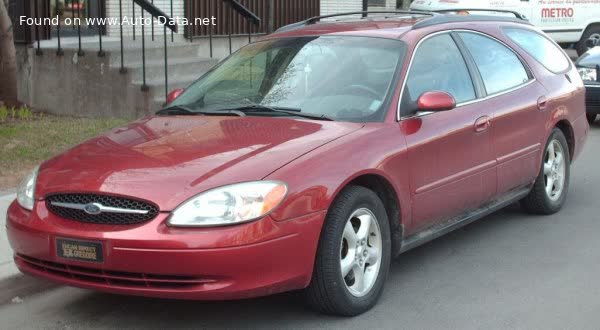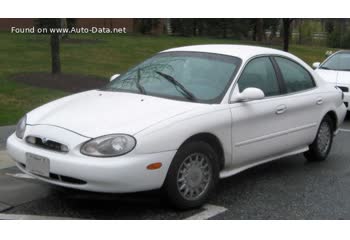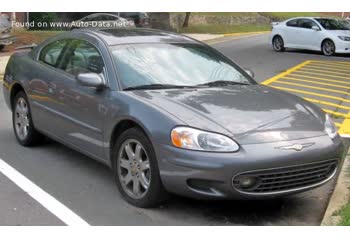Everything you need to know about specifications and performance - Ford Taurus 2000 - 3.0 V6 (155 Hp) Automatic

Overview:
What is the engine capacity of a Ford Taurus 2000?
The engine capacity of the Ford Taurus 2000 is 2986.
Ford Taurus 2000 How many horsepower?
The engine power of the Ford Taurus 2000 is 155 Hp @ 4900 rpm..
What is the Ford Taurus 2000 engine?
Ford Taurus 2000 engine is Vulcan. (Click to see other cars using the same engine)
General:
Brand: Ford
Model: Taurus
Generation: IV Station Wagon
Modification (Engine): 3.0 V6 (155 Hp) Automatic
Start of production: 2000
End of production: 2005
Powertrain Architecture: Internal Combustion Engine
Body type:Station wagon
Seats: 5
Doors: 5
Engine:
Power: 155 hp @ 4900 rpm.
Power per litre: 51.9 hp/l
Torque: 251 nm @ 3950 rpm.
Engine Model/Code:Vulcan
Engine displacement: 2986
Number of cylinders: 6
Engine configuration: V-engine
Number of valves per cylinder: 2
Fuel injection system: Multi-port manifold injection
Engine aspiration: Naturally aspirated Engine
Engine oil capacity: 4.25 l
Coolant: 11 l
Engine layout: Front, Transverse
Cylinder Bore: 89 mm
Piston Stroke: 80 mm
Compression ratio: 9.3:1
Performance:
Fuel Type: Petrol (Gasoline)
Fuel consumption (economy) - urban: 12.4 l/100 km
Fuel consumption (economy) - extra urban: 9.1 l/100 km
Acceleration 0 - 100 km/h: 10.9 sec
Acceleration 0 - 62 mph: 10.9 sec
Maximum speed: 180 km/h
Weight-to-power ratio: 10.3 kg/Hp, 97.2 Hp/tonne
Weight-to-torque ratio: 6.4 kg/Nm, 157.4 Nm/tonne
Acceleration 0 - 60 mph: 10.4 sec
Space:
Kerb Weight (kg): 1595
Max. weight (kg): 2055
Max load (kg): 460
Trunk (boot) space - maximum: 2302 l
Fuel tank capacity: 68 l
dimensions:
Length: 5022 mm
Width: 1854 mm
Height: 1468 mm
wheelbase: 2756 mm
Front track: 1566 mm
Rear (Back) track: 1570 mm
Minimum turning circle (turning diameter): 12.1 m
Powertrain, Suspension and Brakes:
Drivetrain Architecture: The Internal combustion Engine (ICE) drives the front wheels of the vehicle.
Drive wheel: Front wheel drive
Number of gears and type of gearbox: 4 gears, automatic transmission
Front brakes: Ventilated discs
Rear brakes: Disc
Assisting systems: ABS (Anti-lock braking system)
Steering type: Steering rack and pinion
Power steering: Hydraulic Steering
Tires size: 215/60 R16
Wheel rims size: 16
Front suspension: Wishbone
Rear suspension: Wishbone
See also

Last generation.
Its production began in 2015 until 2019

Other generation.
Its production began in 1997 until 1999

Same engine. (Vulcan).
Its production began in 1992 until 1994

Same engine. (Vulcan).
Its production began in 1995 until 1999

Same production year and almost the same engine capacity.
Its production began in 2000 until 2007

Same production year and almost the same engine capacity.
Its production began in 2000 until 2006

Write a comment